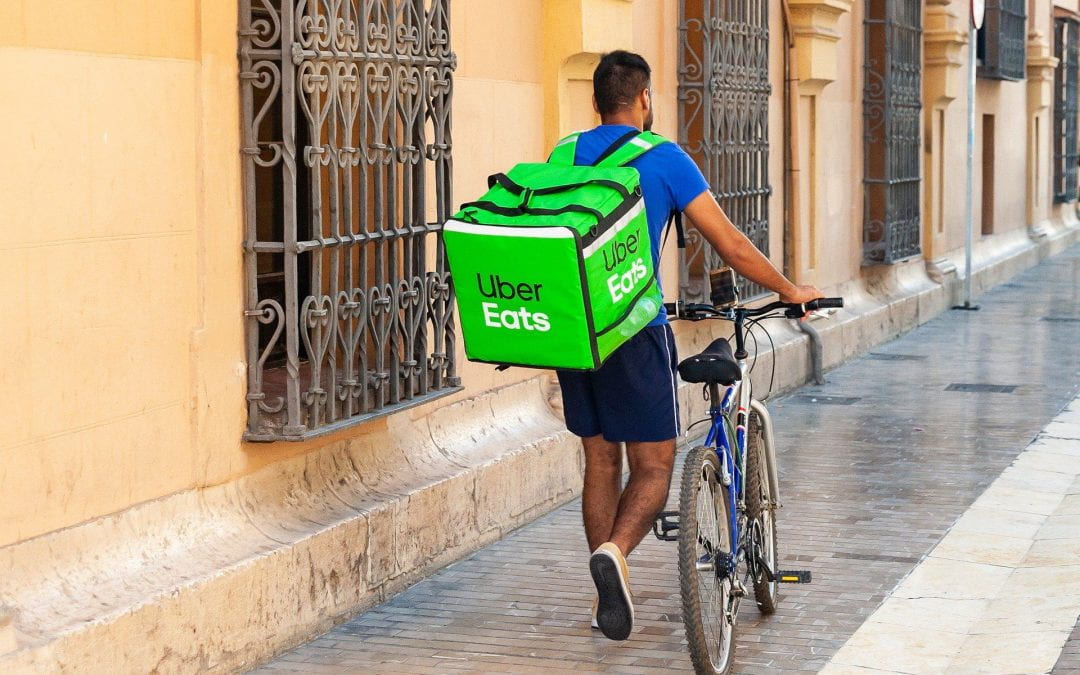By Rajshri Roy
On-off lockdowns and social distancing has seen demand for food delivery services soar. Dr Rajshri Roy asks that we examine the impact of such services on our exposure to unhealthy foods and dietary intake.
Online food deliveries have been growing in popularity since Uber Eats’ arrival in New Zealand in 2017. And Covid-19, with its changing lockdown levels and on-off social distancing restrictions, has accelerated this demand.
One in four people in New Zealand now order food online, mainly Millennials (aged 25-34 years) and Generation Zs (aged 15-24), digital natives to whom online food delivery is second nature. These age groups are far more likely to order food online than older generations (63 percent vs 23 percent for baby boomers).
Growth of these services has been rapid worldwide and they are changing the traditional ways people access restaurants and takeaway foods.
However, a joint study with researchers in New South Wales highlights that most of the food sold by online food delivery services are junk foods which means online food delivery (OFD) is making it easier for people to buy food of low nutritional quality.
We know that poor diets are responsible for global ill-health. In New Zealand alone, obesity is prevalent and has tripled in the last 30 years. Since the 1980s, we have seen an ever-increasing supply of cheap, tasty, energy-dense food that is effectively marketed, widely available and now, with OFD, even more easily accessible. Young people in New Zealand are spending on average 20 percent more than their predecessors at restaurants or on ordering takeaway foods.
Restaurant and takeaway foods are associated with significant increases in daily energy, sugar, saturated fat, and sodium intakes, which are leading risk factors for noncommunicable diseases such as obesity, type 2 diabetes, and certain cancers. The expansion of restaurant and takeaway foods onto online platforms is augmenting the traditional environment and posing a new threat to public health.
However, despite this increasing popularity, our research is the first to be conducted on the healthiness of popular food outlets and the nutritional quality of their popular menu items on online food delivery sites. Our study, Junk Food on Demand, examined the nutrition quality of a market leading OFD service Uber Eats, in Auckland and Sydney.
We used publicly available population-level data to identify Auckland as a geographical area with an above-average population of youth (15-34-years). Sixty-one percent of Auckland Council suburbs have the Uber Eats service available and data was collected on the most popular food outlets and most popular menu items, for each identified suburb.
Each outlet was categorised as unhealthy, less healthy, or healthy according to the Food Environment Score, which is an independent public health rating system. Each menu item was classified according to New Zealand dietary guidelines as either “core” foods which are those found in the five main food groups and should make up the bulk of our diets (vegetables and fruit, legumes and grain, nuts and seeds, dairy, meat, poultry, seafood and eggs); or “discretionary”, which are foods that are energy dense (i.e. high in sugar and fat) and nutrient poor (low in vitamins, minerals and fibre).
Data on geographical distances between food outlets and suburbs, and levels of deprivation was collected to ascertain associations between socio-economic status and service offerings and usage.
We found that almost three-quarters of food outlets assessed in Auckland were classified as unhealthy, with less than 5 percent of outlets classified as healthy. Most menu items (88.2 percent) evaluated were classed as discretionary foods. Significant associations were observed between the healthiness of food outlets and deprivation levels of food outlet locations with healthier food outlets located significantly more in the least disadvantaged suburbs than the most disadvantaged suburbs. We also found that 90 percent of delivery distances were much greater than 1km, the distance traditionally used to define a neighbourhood food environment.
So, it is clear OFDs are increasing the reach of food outlets, disrupting traditional food environments – and are here to stay. They are a convenient service responding to consumer demand. However, there is potential for good. As our food neighbourhoods grow, and therefore our choices widen, these companies could help make healthy takeaway and restaurant options more accessible.
And how does accessibility to healthy food turn into making healthy food choices? We recognise most eating decisions are made through habit and not consciously, so if we want to effect change in New Zealand’s obesity epidemic, it must come from environmental and cultural change. Our findings, combined with the growing demand for OFDs, demonstrate the need to incorporate ‘digital food environments’ into public health nutrition strategies and policies, which to date are still focused on the built environment. Given that OFDs have strong commercial interests with large fast food franchises, further independent research is needed to understand the impact of such services on exposure to unhealthy foods and dietary intake.
This article was originally published on Newsroom and was republished with permission. For the original, click here.
Rajshri Roy is a Senior Lecturer in Nutrition at the University of Auckland. She is an expert in population nutrition.
Disclaimer: The ideas expressed in this article reflect the author’s views and not necessarily the views of The Big Q.
You might also like:
Meal kit delivery services – Can they advance sustainable eating?

